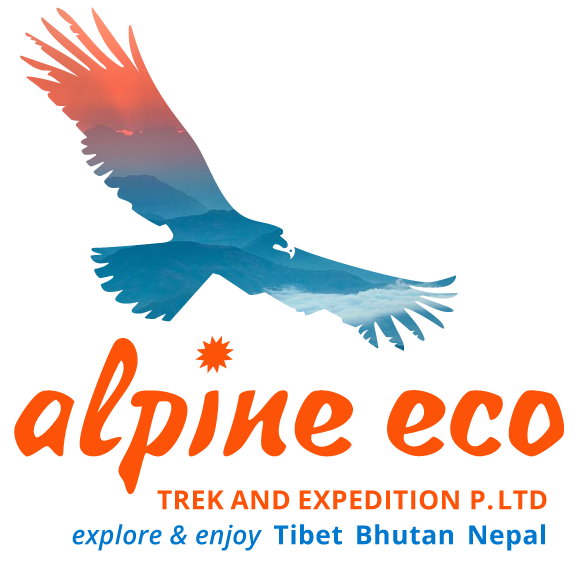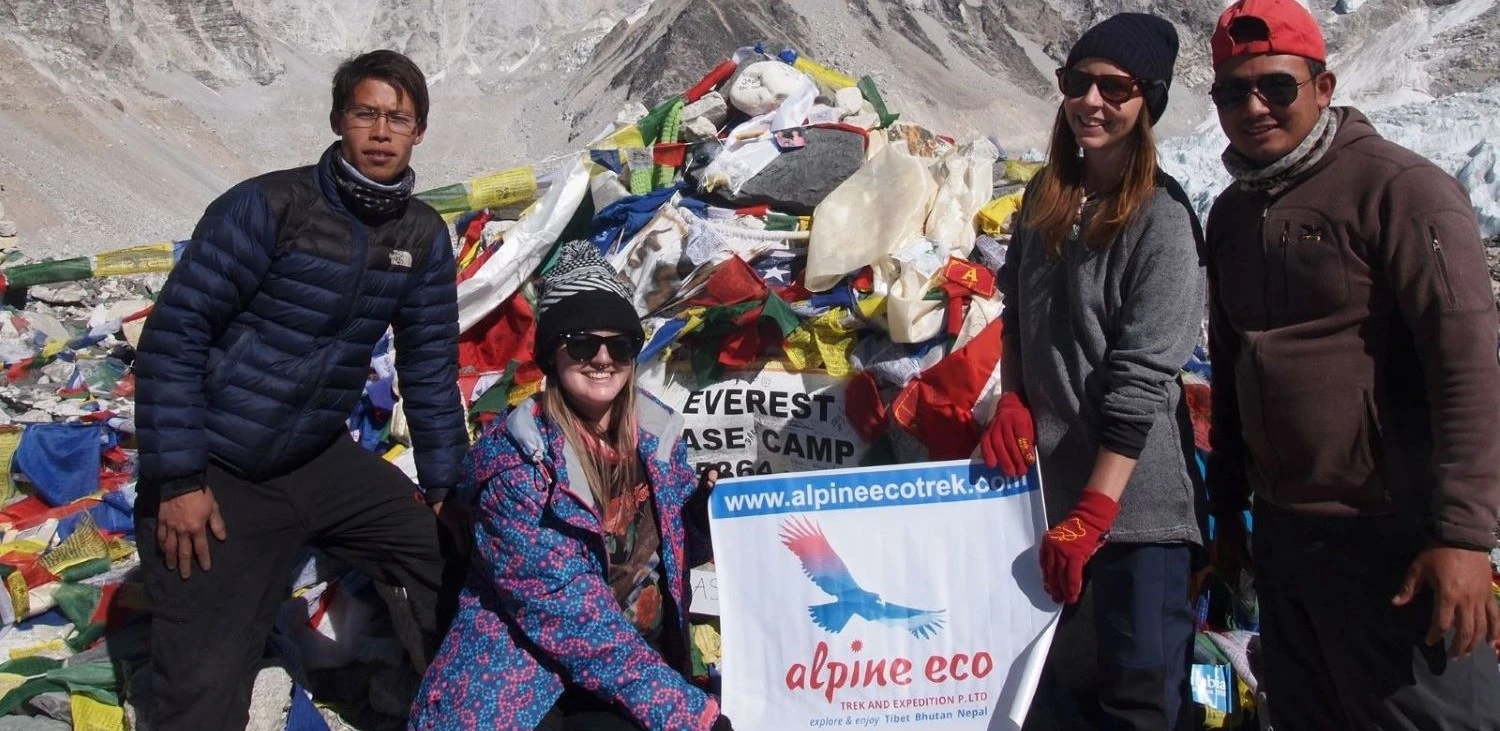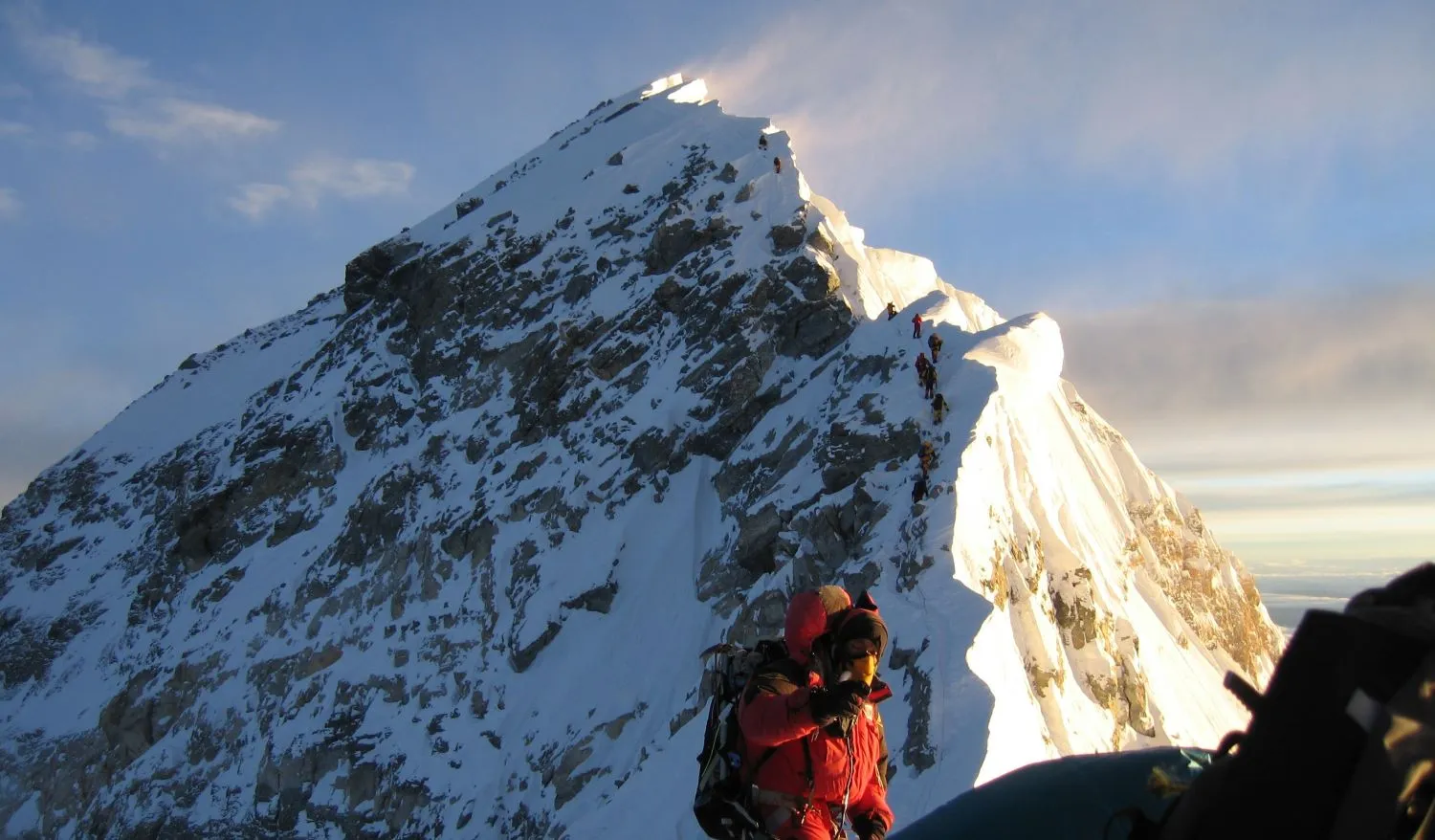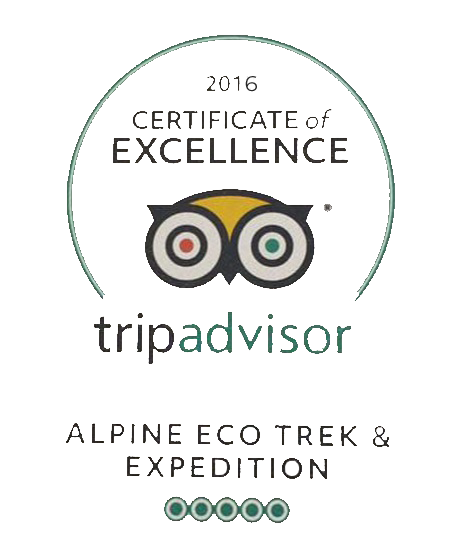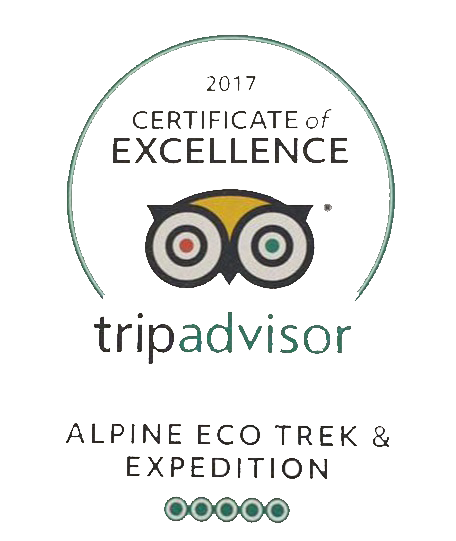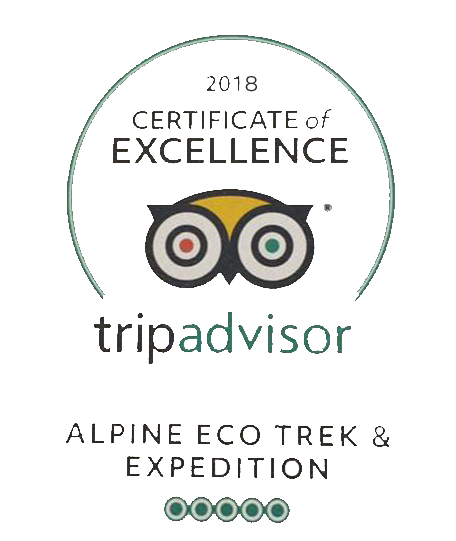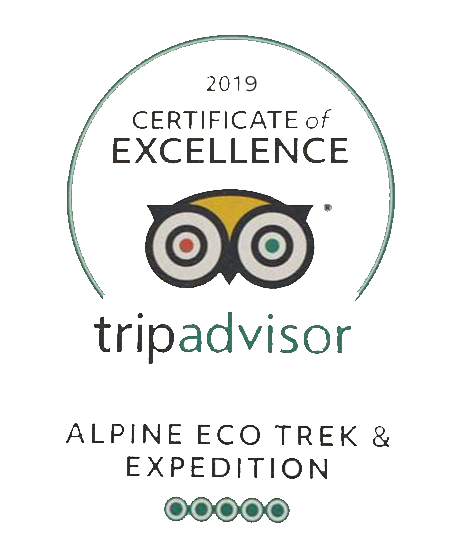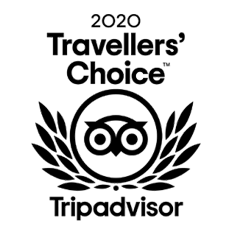Everest Base Camp Trek Guide
-
December 26, 2022
-
Ram Kumar Adhikari
Everest Base Camp Trek Guide
Everest Base Camp Trek (guide) is one of the most popular and preferred trekking destinations all around the world. The base camp, which lies at an elevation of 5,643 meters, is nestled between the Everest massif- which includes Mt. Everest, Lhotse, and Nuptse. As you take your step towards the base camp, in front of you lays the breathtaking picturesque view of the snowy white peaks. It also embraces the best features of Nepal’s untouched Himalayan beauty. Your journey to the base camp presents amazing and awesome experiences that will last with you for a lifetime. Moreover, Everest Base Camp Trek is the best trek to encounter and experience the Himalayas and its immense natural and cultural beauty.
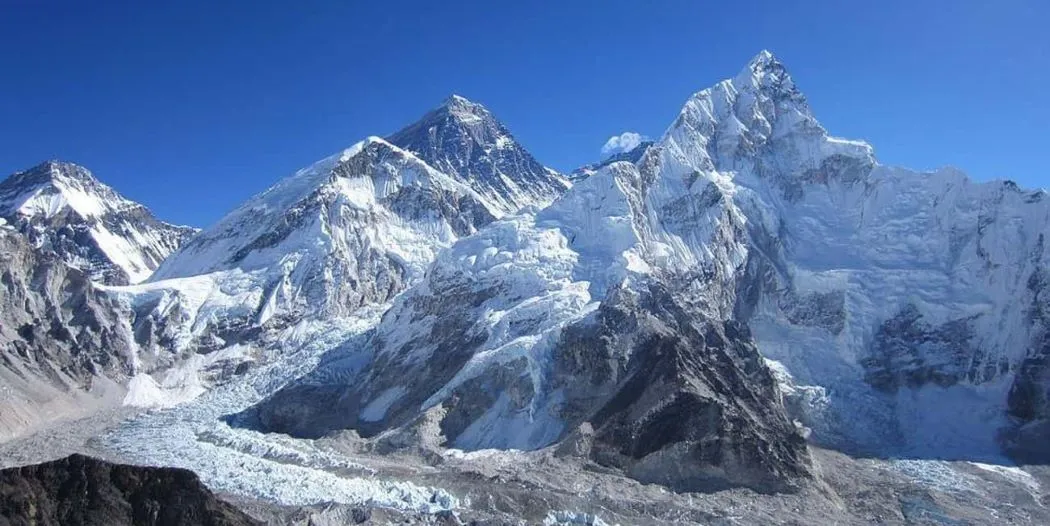
Trekking to the foot of the world’s tallest mountain is a surreal activity that infuses a rush of adrenaline in one’s mind and fuels inner peace. The trek to the majestic crown jewel of Nepal, which stands tall and proud, is one great experience you should not miss out on.
Everest Base Camp Route
Your adventurous trek to the Everest base camp starts with a scenic flight to Lukla. While flying, you witness the imminent change in the terrain and with a thrilling landing at the Tenzing Hillary Airport in Lukla, the entertaining journey starts. As you begin the trek to the base camp, you pass through several small Sherpa villages located on the foot of the Himalayas. Your trek starts from the lower altitude villages where you are surrounded by lush vegetation, blossoming vibrant rhododendrons and fertile plantations. The majority of the trekking trails are situated on the inner surface of the protected Sagarmatha National Park where the forest is filled with exotic and rare floras and faunas of the Himalayan region. As you walk up higher and higher, you will come across the ancient Sherpa settlements of Namche Bazaar, Tengboche, Dingboche, and many other villages before you reach the base camp. On the way, there are many good teahouses and lodges where you can eat and rest while walking or rest the night and meet many other trekkers from all around the world.
Trip Highlights
- Panoramic views of the Everest massif and other great peaks nearby from the base camp or the Kalapatthar viewpoint.
- Lukla airport is also known as the most challenging airport all around the world as it is very small and exposed to extreme climates at a high altitude.
- Also, another highlight of the trip is Namche Bazaar which is a popular mountain town and is also known as the gateway to the Himalayas. With a gorgeous mountain view of Kongdi RI and Thamserku, this town is the central hub of the region.
- The ancient Buddhist monastery also known as the Tengboche monastery is another major highlight of the trip. Adorned with vibrant prayer flags and Mani wheels this monastery provides spiritual energy and good luck to the trekkers.
Everest Base Camp Itinerary
Day 01: Arrival in Kathmandu (1,350m).
Day 02: Rest day or a cultural tour of Kathmandu valley.
Day 03: Fly from KTM to Lukla (2,880m), and trek to Phakding (2,640m), 4hrs walking.
Day 04: Trek from Phakding to Namche Bazaar (3,445m), 5 to 6hrs walking.
Day 05: Acclimatization day, hike to Everest view hotel.
Day 06: Trek from Namche Bazaar to Tengboche (3,860m), 5 to 6hrs walking.
Day 07: Trek from Tengboche to Dingboche (4,250m), 5 to 6hrs walking.
Day 08: Rest day at Dingboche (4,250m).
Day 09: Trek from Dingboche to Lobuche (4,900m), 5 to 6hrs walking.
Day 10: Trek from Lobuche to Everest Base Camp (5,364m) via Gorakshep (5,150m), 8hrs walking.
Day 11: Trek from Gorakshep to Kalapatthar (5,545m) and then to Pheriche (4,240m), 7hrs walking.
Day 12: Trek from Pheriche to Tengboche (3,860m), 5 to 6hrs walking.
Day 13: Trek from Tengboche to Namche Bazaar (3,445m), 5 to 6hrs walking.
Day 14: Trek from Namche Bazaar to Lukla (2,880m), 6 to 7 hours walking.
Day 15: Flight from Lukla to Kathmandu, 35 minutes.
Day 16: Drive to the Airport to head back to that special place we call home.
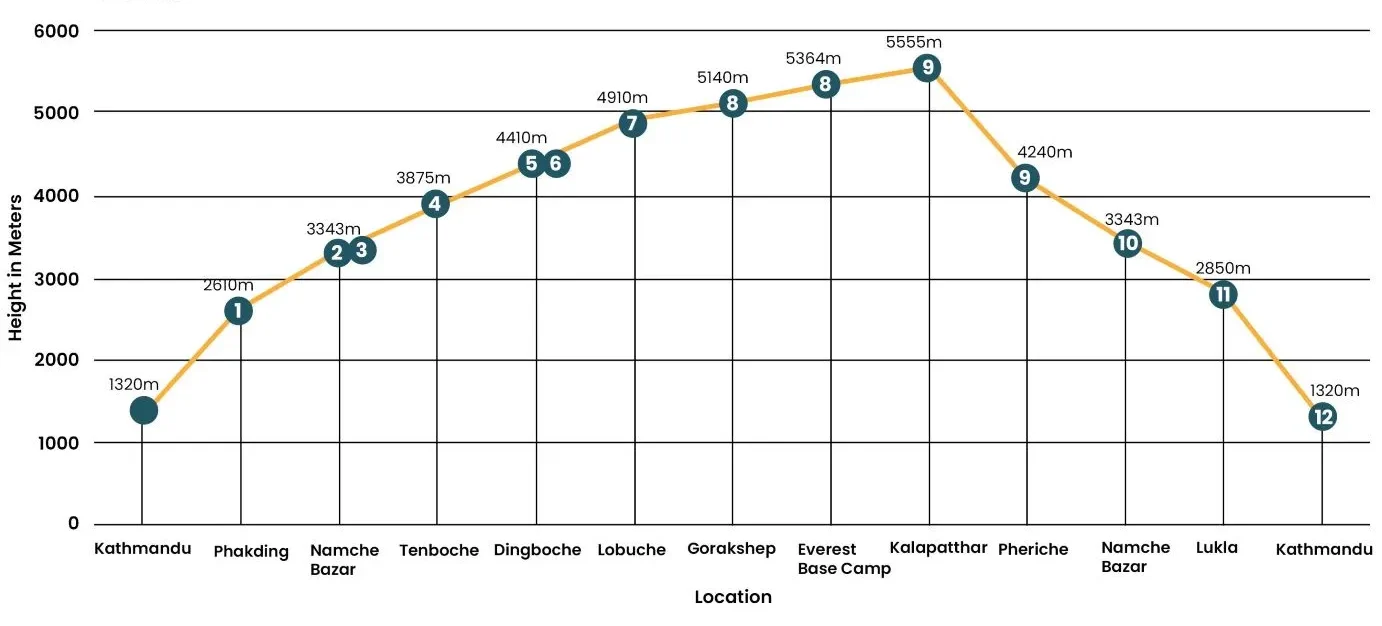
Everest Base Camp Brief Itinerary
Your long-planned trip to the Everest Base Camp Trek is of 16 days and it starts with your arrival at Tribhuwan International Airport in Kathmandu. The next day, you will be touring around the city and visiting the famous cultural and historical heritage in the crowded city of Kathmandu. Here on, the next day is filled with excitement gushing in your nerves as you fly to Lukla airport where you can see the snowy peaks from a great distance.
Now, you start the real trekking from Lukla to Phakding which takes almost 4 hours of walking and rest in Phakding for the night. You start trekking the next day to higher altitudes and within 5-6 hours of trekking, you reach the mountainous town named Namche Bazaar at an altitude of 3445m. Here, you will be able to spend one more day for your body to acclimatize to the change in elevation. You can wander around the town or hike up to the Everest View Hotel where the majestic massifs can be seen. Your next destination is Tengboche and from Namche Bazaar, you will be walking for 5-6 hours. Upon your arrival at Tengboche, you will see prayer flags, stupas and the oldest monastery known as Tengboche Monastery.
From Tengboche, the upcoming stop is Dingboche which will make you walk for a total of 6 hrs. Again, you spend another day at Dingboche where you can either explore the summer valley or hike up to Nagerjun. After a rest for a day, you start trekking to Lobuche which is at an elevation of 4910m. On your way to Lobuche, you come across the Khumbu glacier which is the biggest in the region. After almost 7 hrs of walking, you finally reach Lobuche and rest there for the night. Now, you are very close to the Everest base camp and with heart-thumping excitement, you trek towards the Everest base camp via Gorekshep which is 4km away from Lobuche. Without stopping at Gorekshep, you trek forward toward the Everest base camp.
After reaching the base camp, your journey downhill starts with a trek to Gorekshep to Kalapatthar to Pheriche, walking for 6 hours. With a new day and light heart, you trek from Pheriche to Tengboche to Namche Bazaar and Lukla. Now, that you have accomplished your trek to the EBC, you fly back to Kathmandu and from Kathmandu to the special place called home.
Best Season to do Everest Base Camp Trek
The Everest Base Camp Trek is a challenging journey. Filled with steep trials, unpredictable weather and diverse terrain, there may be various obstacles in the course. Everest base camp trek can be done all year long but in the rainy season, the trails are slippery and with unpredictable weather during the season, you won’t be able to get the best out of the Everest base camp. Hence, the best seasons to initiate this trek are spring and autumn which occurs from February to May and September to December respectively. During the spring (pre-monsoon) season, the weather is not that hot or cold and while trekking, you will be able to enjoy the spring breeze in the Himalayas with the lush green and colorful flowers everywhere. Similarly, during the autumn (post-monsoon) season, the rainfall has been stopped and the weather has cooled down. With less heat haze and clouds, you will be able to get a spectacular and perfect view of the mountains in the pre-monsoon season.

Trekking Permits and Cost of Everest Base Camp
You can get the trekking permit directly at the local government of Khumbu where they collect NPR 3000 from foreigners as permit fees. If you are flying to Lukla, you can also get the permit at the Tenzing Hillary Airport. Similarly, if you are following the classic Jiri to EBC, then you will have to apply for the permit at Jiri and you will have to pay NPR 3000 as you also need to take the permit for Gaurishankar National Park. However, this permit cannot be obtained in Kathmandu. Your overall cost of the Everest base camp trek per person can cost up to USD 1400. Contact us for a fresh and best price quotation.
Food and Accommodation
The trekking trails to the Everest base camp is known for the variety of teahouses and lodges. Within every trail, you will be able to find tea houses and lodges where you can grab food or rest for the night. The Everest region is heavily inhabited by the Sherpas and you can enjoy the Sherpa dishes and warm butter tea in tea houses and lodges. The food there might be quite pricey because all the materials are brought by air and by animals. The accommodation is basic and not so extravagant but it will keep you warm and happy.
Trekking gears or Equipment required
Since the trek to Everest base camp is very challenging and adventurous, there are many gears and equipment you will need throughout the journey.
- Comfortable trekking shoes
- Lightweight clothes and warm jackets
- Fleece coats
- Windproof clothing
- Lightweight thermal gloves
- Sleeping bags
- Sleeping pads
- Headlamps First aid box
- Diamox and other medicines
- Water bottle
- Trekking poles
- Sunglasses with UV protection
If you have not brought any trekking materials or equipment, you do not need to worry as you will find ample of stores in Kathmandu where you can buy or rent good and high-quality trekking materials, gear and equipment.
AMS (Acute Mountain Sickness)
Trekking to Everest base camp has many challenges and one of the major factors to make it challenging and unpredictable is the altitude. Acute mountain sickness, also known as Altitude sickness, is one of the major risks one can face during this trek. Every trekker should know about this sickness before venturing out to the Himalayas. This sickness occurs when the body does not receive enough oxygen due to low air pressure at high altitudes. The risk of getting altitude sickness starts from an elevation of 2400m above sea level. Some of the most typical symptoms are headache, nausea, vomiting, and lightheadedness. The symptoms can vary according to the level of altitude and a person’s body. Therefore, Diamox should be kept near you in case of altitude sickness.

Useful tips for EBC Trekking
- Physically train your body with long hikes, treks, and exercises before starting the EBC trek.
- Preparing or buying the right trekking gear needed for the trek.
- A comfortable pair of trekking shoes is the most important thing you should invest in.
- Pack lightweight, warm clothes as you will have to carry your bag through the whole trip.
- First aid boxes and Diamox and other medicines should be prepared as medical services are hard to find in higher regions.
- Make sure you get travel insurance as it can be very expensive for emergency health services.
- Get a good night’s sleep before each day as you will need heaps of energy to finish the trek.
In conclusion, Everest Base Camp Trek is truly an adventurous and amazing trek. Although challenging, it provides you with the best trekking experiences which you cannot find anywhere in the world.
